How to plant a winter container – a step by step guide for perfect planting
Create a beautiful botanical display that can endure the winter months with our helpful guide on how to plant a winter container
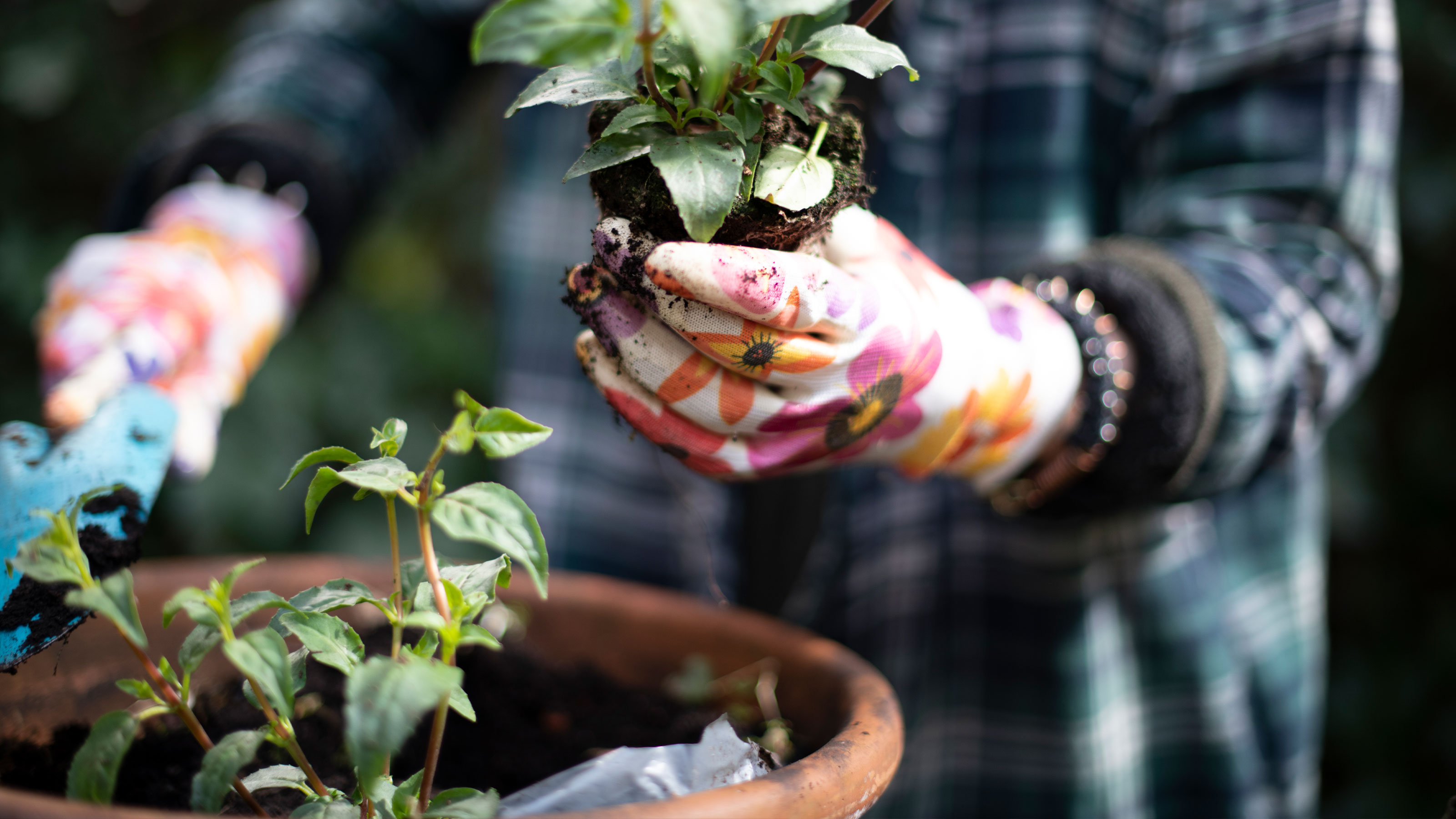

Pretty pots and containers of plants and flowers should not just be reserved for the seasons of spring and summer, instead, learning how to plant a winter container can allow you to enjoy the different variations of nature in your outdoor space all year round.
A winter container can add a beautiful feature to your backyard or winter garden ideas, lifting the landscape with eye-catching color, texture and appealing visual interest during the colder fall and winter months.
Just like creating winter hanging baskets, there are so many winter flowers and winter plants to choose from to help create a truly unique winter container. From striking bright flowers such as cyclamen, to more classic plant combinations such as wintergreen and phormium sundowner – the choices really are endless for container gardening ideas!
How to plant a winter container
Groundskeeper and advisor at Patio Productions, Stacie Krljanovic, states, 'it's the perfect time of year to get outside and enjoy the fresh air. You might think that you have to wait until spring to start planting, but in fact, winter is the ideal time to plant your container garden.'
Explore our helpful guide below to learn how to plant a winter container, helping your outdoor space feel more inviting, picturesque and full of plants and flowers – no matter the season.
You will need:
- Planting container, we recommend the resin Suncast Sonora Wicker Planter or the wooden Bucket Barrel Garden Planters - ensure your containers have drainage holes. Stefan Bucur, gardening expert an owner of Rhythm Of The Home, says, 'a container for a winter garden needs to be able to withstand extreme changes in temperature. Containers that are made from materials like ceramic, stone and terracotta can hold onto moisture that could freeze and crack the container. Resin containers are great for the winter because they are not porous and can easily withstand low temperatures.'
- Soil, we recommend the Conrad Fafard Professional Pot Mix
- A selection of plants and flowers that are suitable for the cold winter months
- Water
- Gardening gloves – for a proper hands on approach! We recommend the Cooljob Bamboo Touch Screen Gardening Gloves
1. Prep your soil
Fill your chosen container with soil, to around just over halfway, leaving enough room for your plants and flowers. Dig holes in the soil big enough to fit all of your plant and flowers' root-balls.
2. Place plants
Carefully place your selections onto the holes and firm up more added soil around the roots using your hands so they are held in place. Do not overcrowd your container, this will affect the growth of your plants and flowers and can make it harder for water to drain – leading to issues such as rot and mold.
Violet Joy Miller from Greeny Thumbs advises, 'when making your winter container arrangement, it is important to use the thriller, filler, spiller method. This simply means that you need to choose one plant as the ‘thriller’, which will be the focal point and the center of your arrangement – this could be a small tree or an evergreen shrub.
'The ‘filler’ plants will be used to fill in any gaps and can be either evergreen or deciduous – perennials and flowers are good choices for ‘filler’ plants.
'The ‘spiller’ plants will spill over the edges of your pot and can be either evergreen or deciduous – trailing plants such as ivy, sedums or alyssum are good choices.'
3. Water your plants
When you are happy with your arrangement, give your plantings plenty of water – you want the soil to remain moist, but never soggy or drenched.
4. Finish the winter container
Adding decorative accents such as pebbles, pinecones, or even lights and festive decorations can add a unique final flourish to your winter container design – see the Tonulax Solar Garden Lights and Lily Solar Flower Lights for some lighting inspiration.
What can you plant in a winter container?
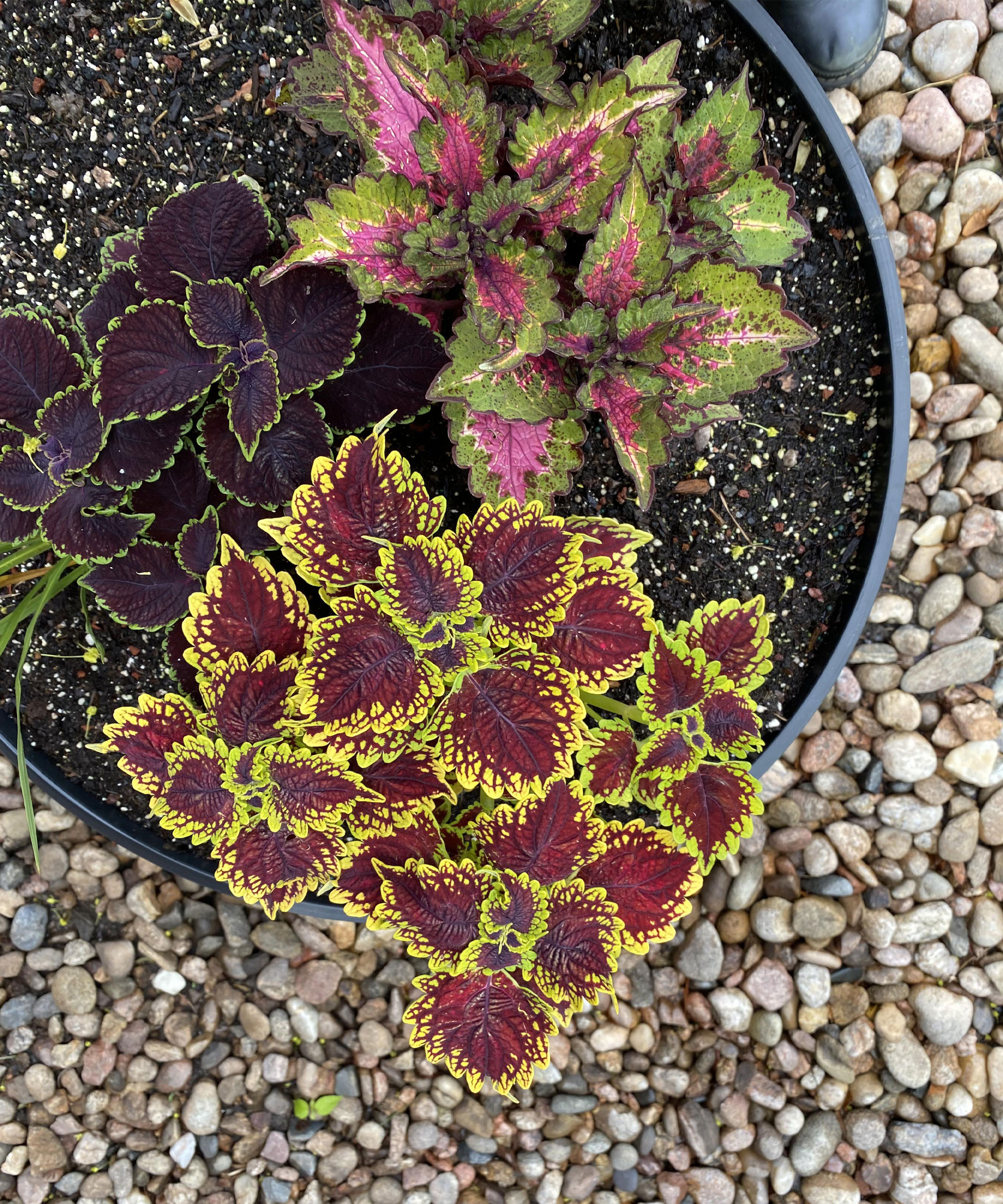
Your chosen plants and flowers must be able to withstand the cold temperatures of the winter months. Some of the best types of plants and flowers to use in your container are evergreens, grasses, berries, and colorful annuals.
Carmen Johnston, owner of Bespoke Garden Plans says, 'one of my go-to containers for winter combines my three T's, tall, thick and trailing. This will work for a variety of containers including a classic, square fiberglass planter. Layer an Ivy Topiary, Cyclomen, Variegated Ivy, Lime Green Heuchera and Holly Fern. The Cyclomen looks great for the holidays and will last until spring! Begin with the ivy, add Cycolmen, fill in with the rest of the plant material.'
See our list below for some guidance on what you can plant in your winter container:
- Lamb's Ear
- Creeping Jenny
- Coral Bells
- Ivy Topiary
- Variegated Ivy
- Lime Green Heuchera
- Holly Fern
- Skimmia
- Euonymus Fortunei
- Mahonia
- Dwarf Conifer
- Pittosporum Tobira
- Dwarf Alberta Spruce
- Heucheras
- Hellebores
- Snowdrops
- Muscari
- Crocus
- Pansies
- Violas
- Cyclamen
- Rosemary
- Thyme
- Sage
- Erica Carneac
- Caultheria Procumbens
- Clivia
- Sedum
- Boxwood
How do you make winter container arrangements?
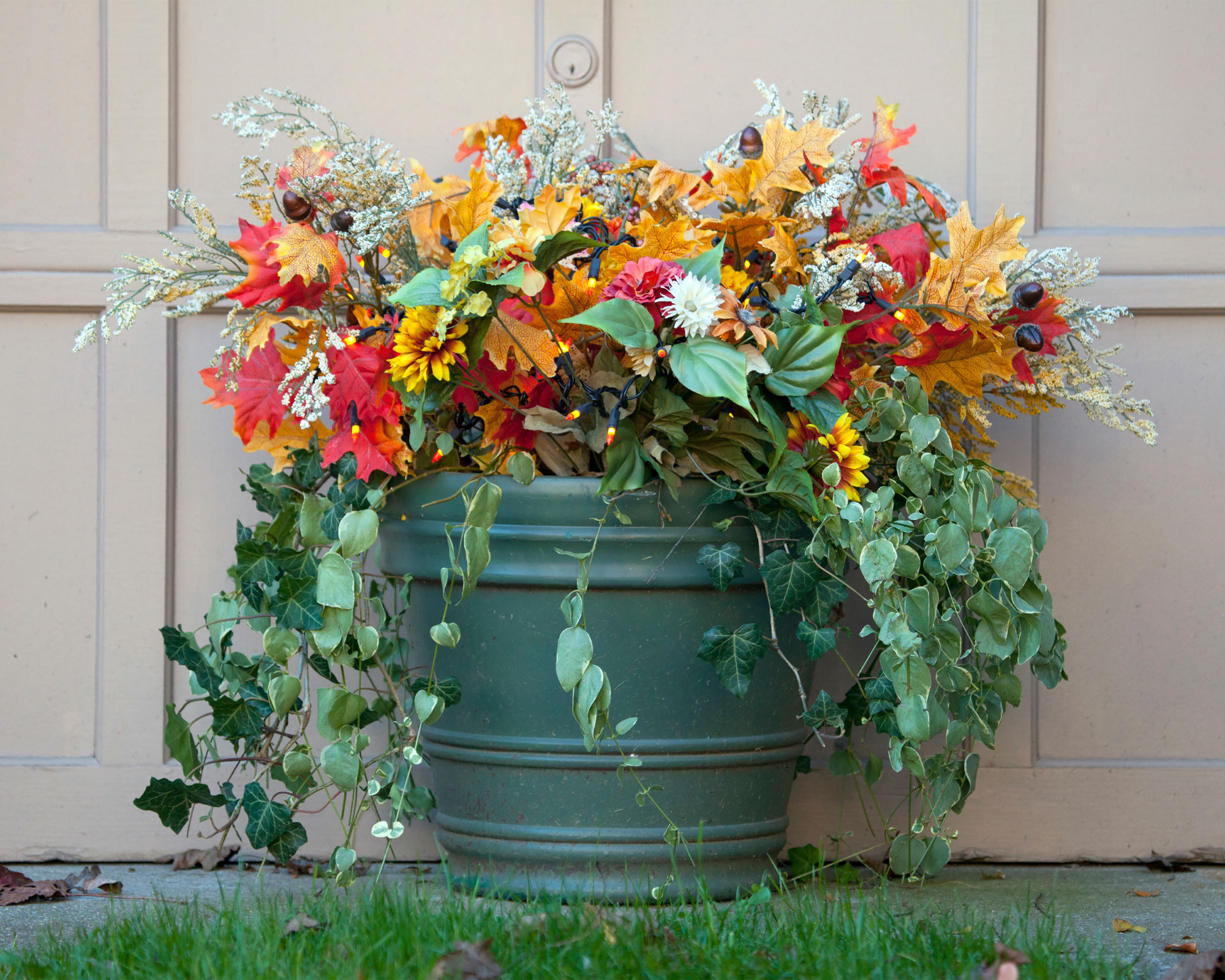
Stefan Bucur says, 'winter containers are very forgiving and require little maintenance and practically no water. Because of this, a lot of gardeners find their winter containers to be a free spirited project. For winter containers, the more plants and decorative elements, the better. Choose one plant to be the main center focus and use the others to accentuate the plant. You can also add in branches, pine cones, and even ornaments for a festive touch.'
A winter container is the ideal place to get creative with beautiful contrasting textures and colors, creating an eye-catching display of plants and flowers in your outdoor space.
Lindsey Hyland, gardening expert and the founder of Urban Organic Yield also suggests to 'make sure to use a variety of textures and colors to create a pleasing arrangement. When selecting plants, be sure to choose varieties that will thrive in the conditions you will provide them, such as hardiness zone and amount of sunlight. You can also use plants with interesting bark, berries or other ornamental features to add interest.'
How you arrange your winter container is of course, completely up to you, however, the helpful tips and expert advice included in this guide will ensure that you have all of the right knowledge and equipment for a successful winter container design.
Sign up to the Homes & Gardens newsletter
Design expertise in your inbox – from inspiring decorating ideas and beautiful celebrity homes to practical gardening advice and shopping round-ups.

Zara joined Homes & Gardens in February 2022 as a Content Editor. After studying English Literature at University, she worked as an Ecommerce Website Editor, Content Writer and Buying Intern at multiple independent businesses within the luxury retail and lifestyle sectors. Her role at Homes & Gardens unites her love, experience and passion for the world of design and desire to create inspiring written content. She enjoys nothing more than discovering new trends, brands and products, whether that be in fashion, interior design or lifestyle.
-
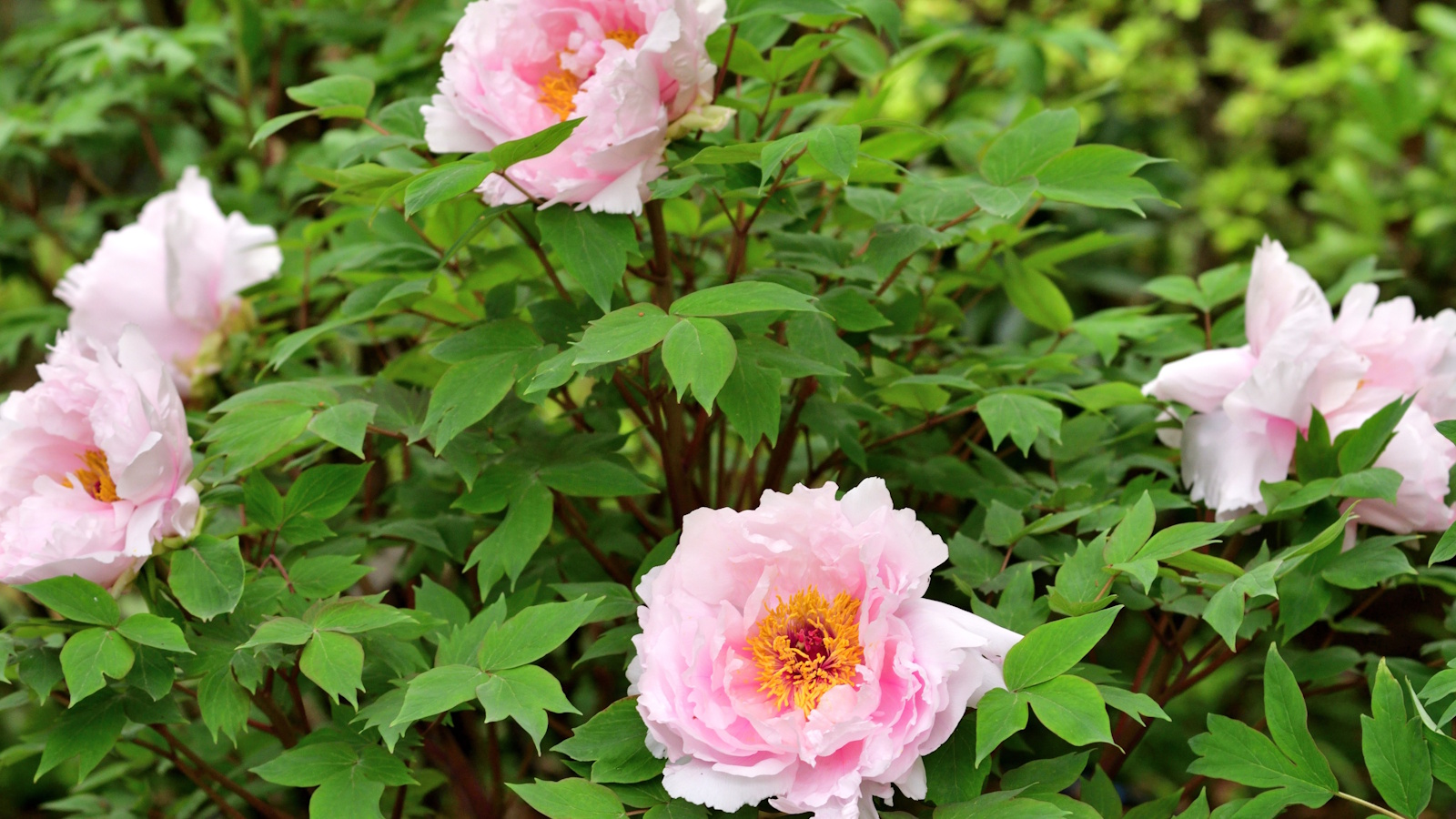 How to grow tree peonies in pots – for a show-stopping shrub that will thrive in partially shaded yards
How to grow tree peonies in pots – for a show-stopping shrub that will thrive in partially shaded yardsWith large, saucer-like blooms, tree peonies are the ultimate flowering shrub
By Thomas Rutter
-
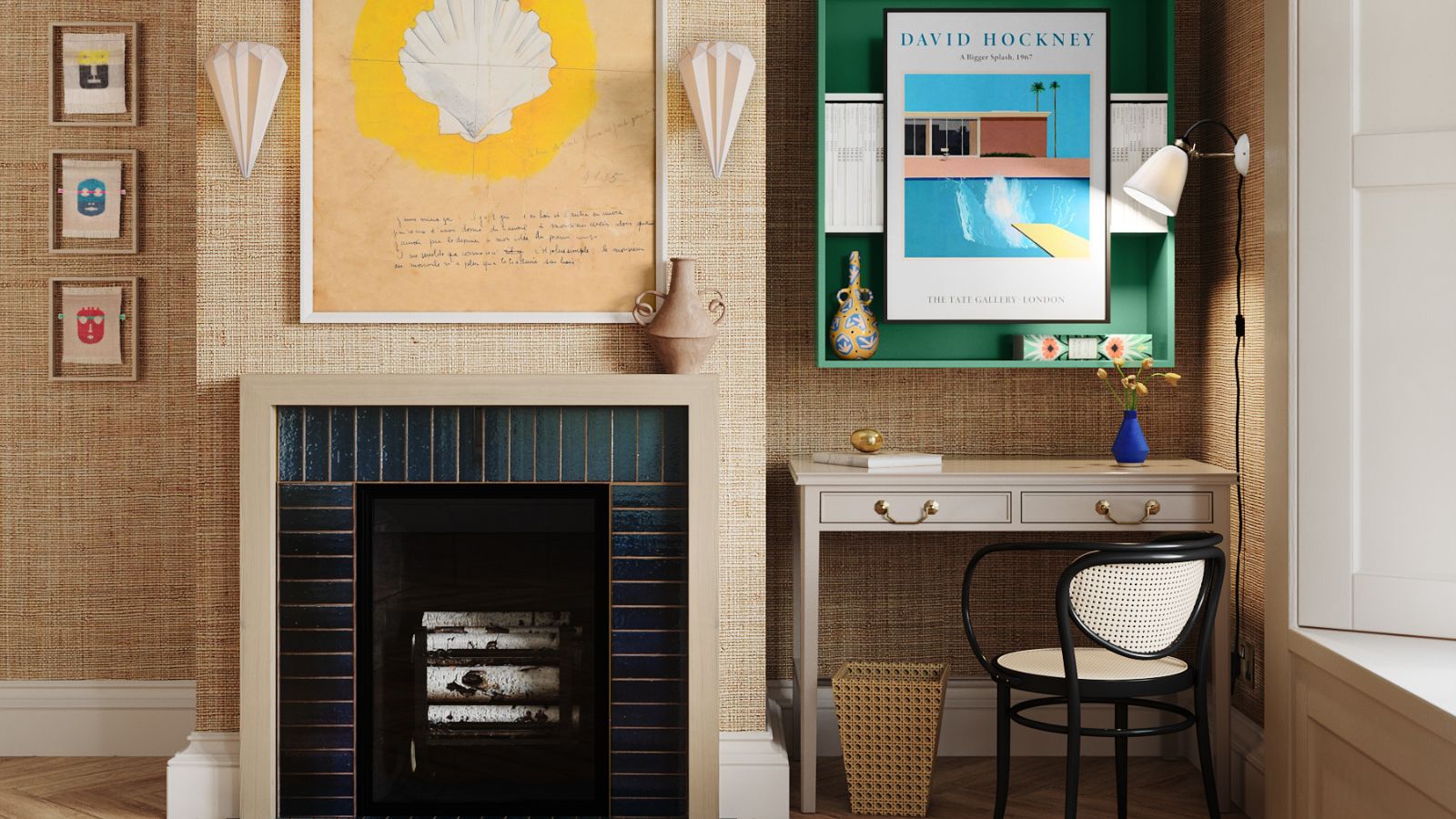 I tried the Temptation Method to finally unpack the boxes I'd been ignoring after a stressful house move – I'm relieved it worked so well
I tried the Temptation Method to finally unpack the boxes I'd been ignoring after a stressful house move – I'm relieved it worked so wellWith a pile of unpacked boxes clogging up my home office, it was time to get motivated
By Sophie Warren-Smith